Abstract
Putrescine and spermidine uptake into carrot (Daucus carota L.) cells in culture was studied. The time course of uptake showed that the two polyamines were very quickly transported into the cells, reaching a maximum absorption within 1 minute. Increasing external polyamine concentrations up to 100 millimolar showed the existence of a biphasic system with different affinities at low and high polyamine concentrations. The cellular localization of absorbed polyamines was such that a greater amount of putrescine was present in the cytoplasmic soluble fraction, while spermidine was mostly present in cell walls. The absorbed polyamines were released into the medium in the presence of increasing external concentrations of the corresponding polyamine or Ca2+. The effects of Ca2+ were different for putrescine and spermidine; putrescine uptake was slightly stimulated by 10 micromolar Ca2+ and inhibited by higher concentrations, while for spermidine uptake there was an increasing stimulation in the Ca2+ concentration range between 10 micromolar and 1 millimolar. La3+ nullified the stimulatory effect of 10 micromolar Ca2+ on putrescine uptake and that of 1 millimolar Ca2+ on spermidine uptake. La3+ at 0.5 to 1 millimolar markedly inhibited the uptake of both polyamines, suggesting that it interferes with the sites of polyamine uptake. Putrescine uptake was affected to a lesser extent by metabolic inhibitors than was spermidine uptake. It is proposed that the entry of polyamines into the cells is driven by the transmembrane electrical gradient, with a possible antiport mechanism between external and internal polyamine molecule.
Full text
PDF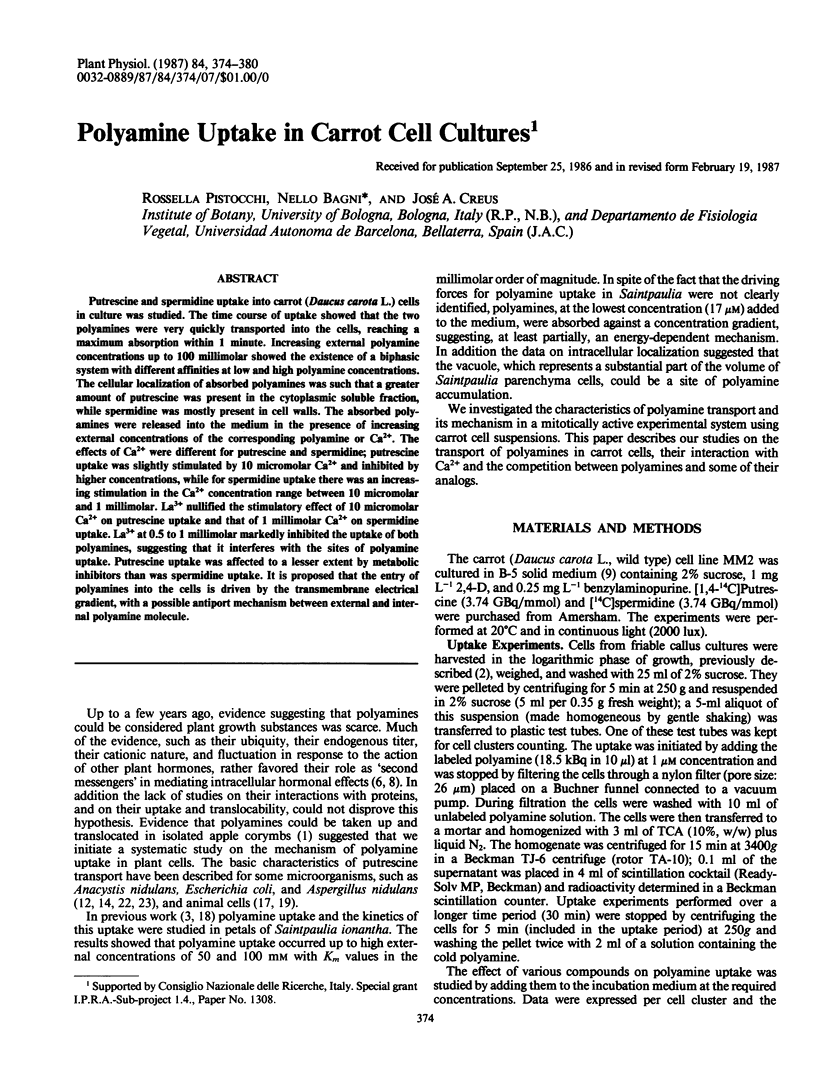

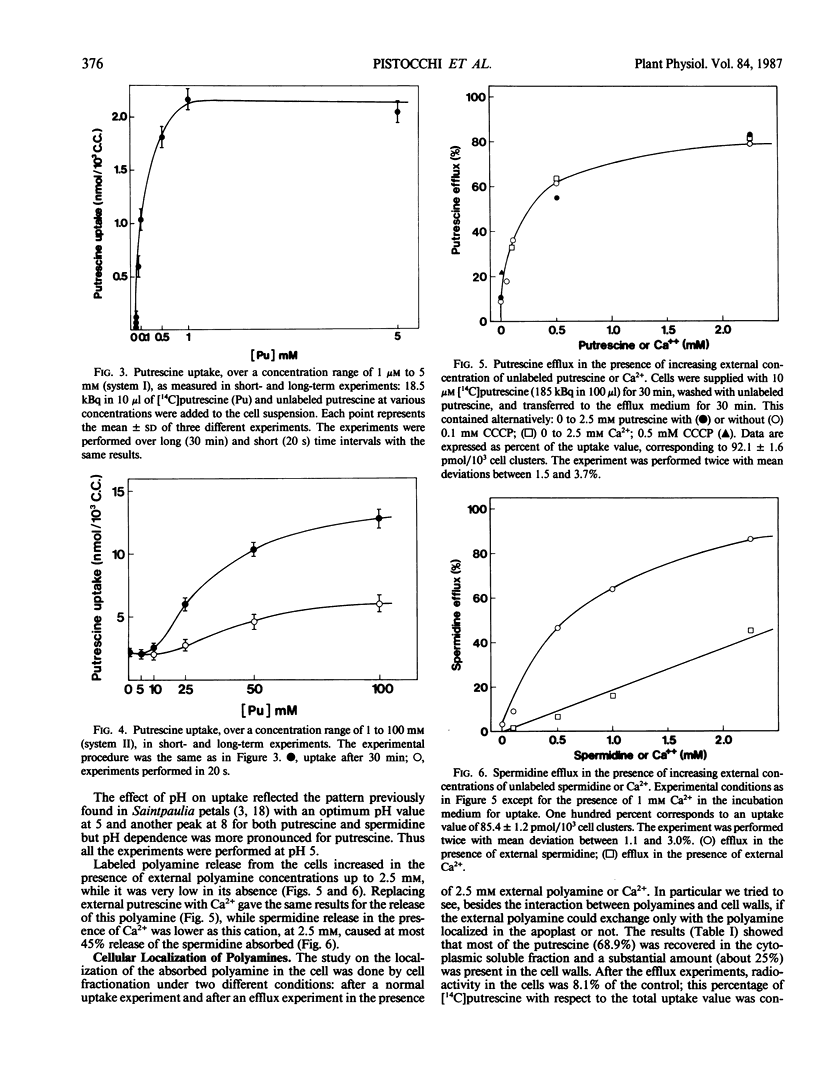
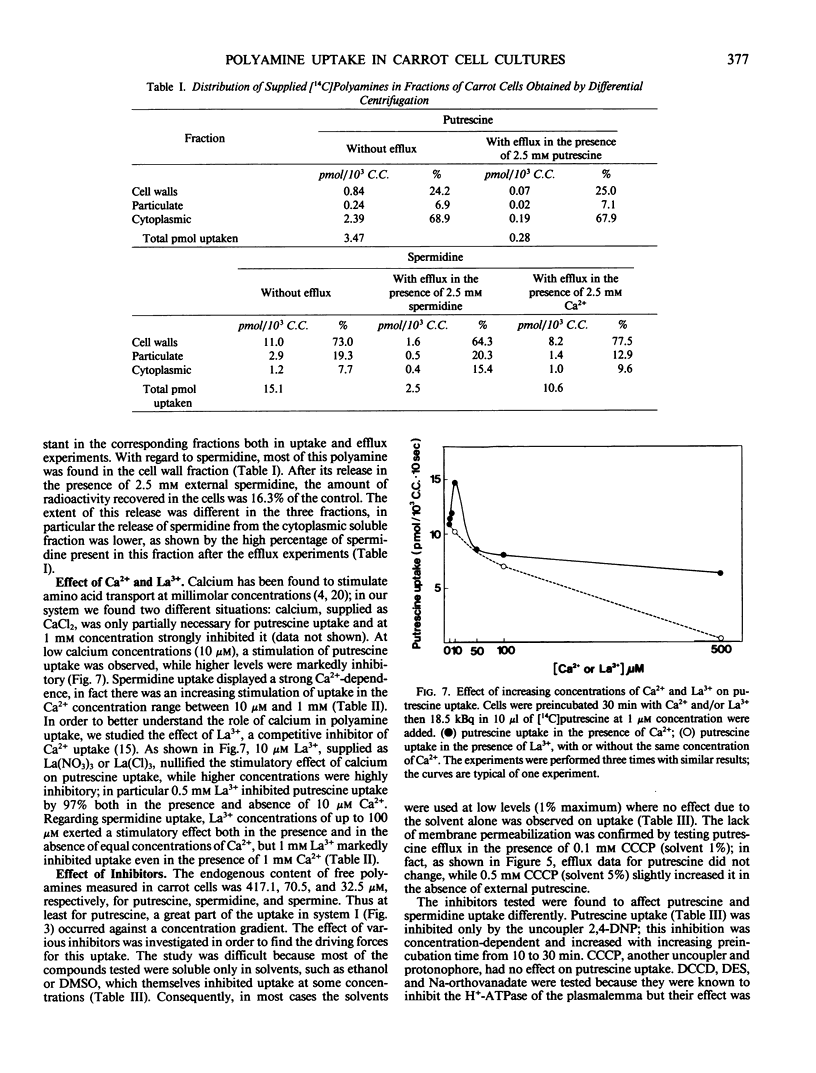
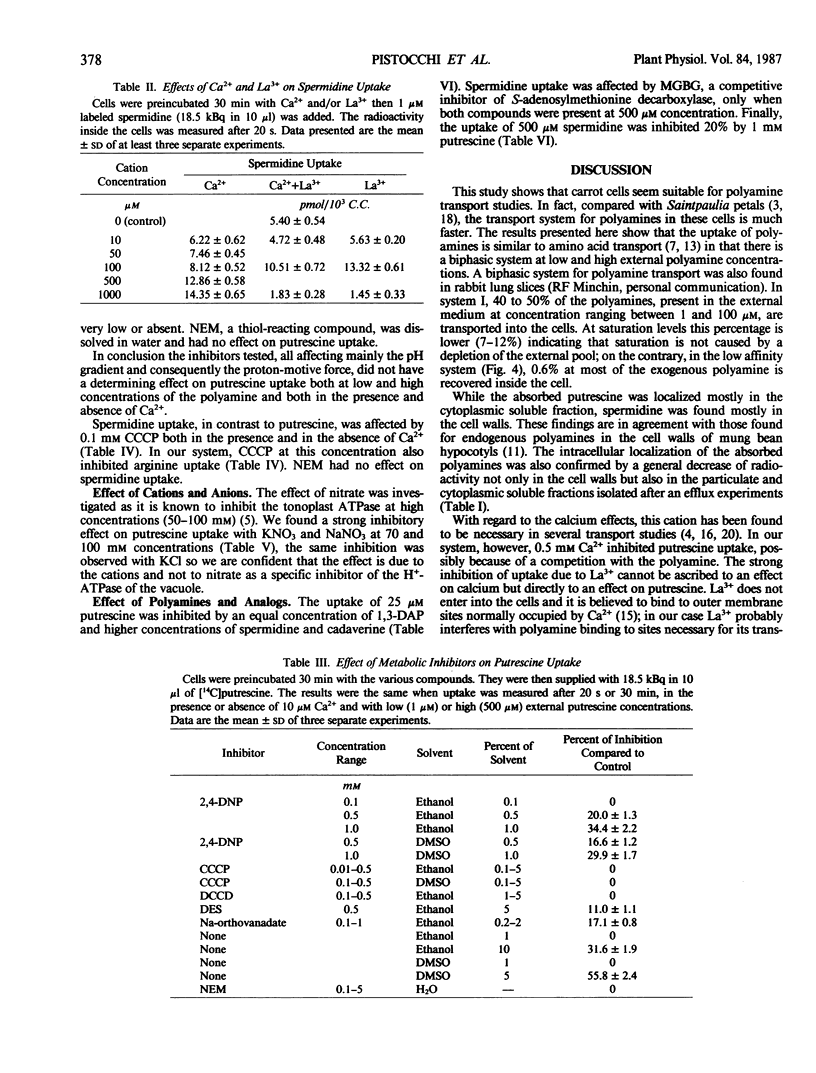

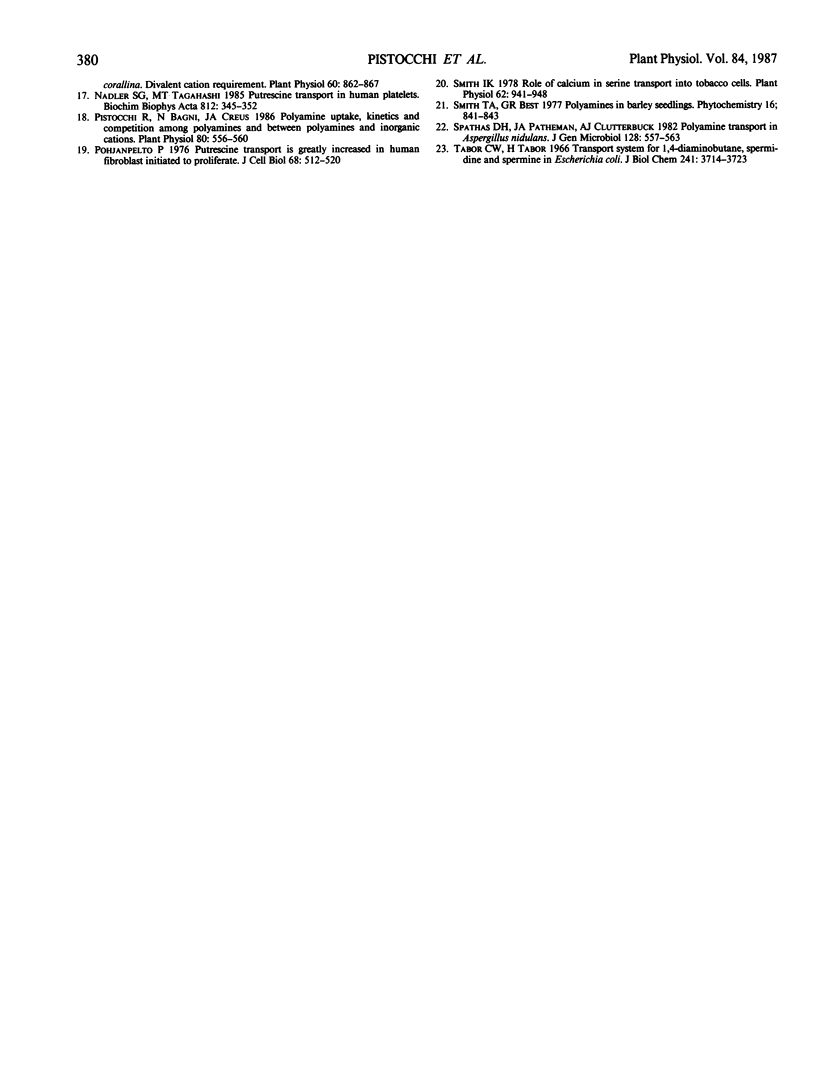
Selected References
These references are in PubMed. This may not be the complete list of references from this article.
- Bagni N., Pistocchi R. Putrescine uptake in saintpaulia petals. Plant Physiol. 1985 Feb;77(2):398–402. doi: 10.1104/pp.77.2.398. [DOI] [PMC free article] [PubMed] [Google Scholar]
- Churchill K. A., Sze H. Anion-Sensitive, H-Pumping ATPase of Oat Roots : Direct Effects of Cl, NO(3), and a Disulfonic Stilbene. Plant Physiol. 1984 Oct;76(2):490–497. doi: 10.1104/pp.76.2.490. [DOI] [PMC free article] [PubMed] [Google Scholar]
- Despeghel J. P., Delrot S. Energetics of Amino Acid Uptake by Vicia faba Leaf Tissues. Plant Physiol. 1983 Jan;71(1):1–6. doi: 10.1104/pp.71.1.1. [DOI] [PMC free article] [PubMed] [Google Scholar]
- Gamborg O. L., Miller R. A., Ojima K. Nutrient requirements of suspension cultures of soybean root cells. Exp Cell Res. 1968 Apr;50(1):151–158. doi: 10.1016/0014-4827(68)90403-5. [DOI] [PubMed] [Google Scholar]
- Guarino L. A., Cohen S. S. Uptake and accumulation of putrescine and its lethality in Anacystis nidulans. Proc Natl Acad Sci U S A. 1979 Jul;76(7):3184–3188. doi: 10.1073/pnas.76.7.3184. [DOI] [PMC free article] [PubMed] [Google Scholar]
- Harrington H. M., Henke R. R. Amino Acid Transport into Cultured Tobacco Cells: I. LYSINE TRANSPORT. Plant Physiol. 1981 Feb;67(2):373–378. doi: 10.1104/pp.67.2.373. [DOI] [PMC free article] [PubMed] [Google Scholar]
- Kashiwagi K., Kobayashi H., Igarashi K. Apparently unidirectional polyamine transport by proton motive force in polyamine-deficient Escherichia coli. J Bacteriol. 1986 Mar;165(3):972–977. doi: 10.1128/jb.165.3.972-977.1986. [DOI] [PMC free article] [PubMed] [Google Scholar]
- Leonard R. T., Nagahashi G., Thomson W. W. Effect of lanthanum on ion absorption in corn roots. Plant Physiol. 1975 Mar;55(3):542–546. doi: 10.1104/pp.55.3.542. [DOI] [PMC free article] [PubMed] [Google Scholar]
- Nadler S. G., Takahashi M. T. Putrescine transport in human platelets. Biochim Biophys Acta. 1985 Jan 25;812(2):345–352. doi: 10.1016/0005-2736(85)90308-6. [DOI] [PubMed] [Google Scholar]
- Pistocchi R., Bagni N., Creus J. A. Polyamine Uptake, Kinetics, and Competition among Polyamines and between Polyamines and Inorganic Cations. Plant Physiol. 1986 Feb;80(2):556–560. doi: 10.1104/pp.80.2.556. [DOI] [PMC free article] [PubMed] [Google Scholar]
- Spathas D. H., Pateman J. A., Clutterbuck A. J. Polyamine transport in Aspergillus nidulans. J Gen Microbiol. 1982 Mar;128(3):557–563. doi: 10.1099/00221287-128-3-557. [DOI] [PubMed] [Google Scholar]
- Tabor C. W., Tabor H. Transport systems for 1,4-diaminobutane, spermidine, and spermine in Escherichia coli. J Biol Chem. 1966 Aug 25;241(16):3714–3723. [PubMed] [Google Scholar]


